- Documentary Values
- Posts
- Assembly to Rough Cut
Assembly to Rough Cut
Nights & Weekends for the past year
We’re back! A little bit delayed from what I promised and hoped to be sticking to schedule wise so this will be a big one to make up for it!
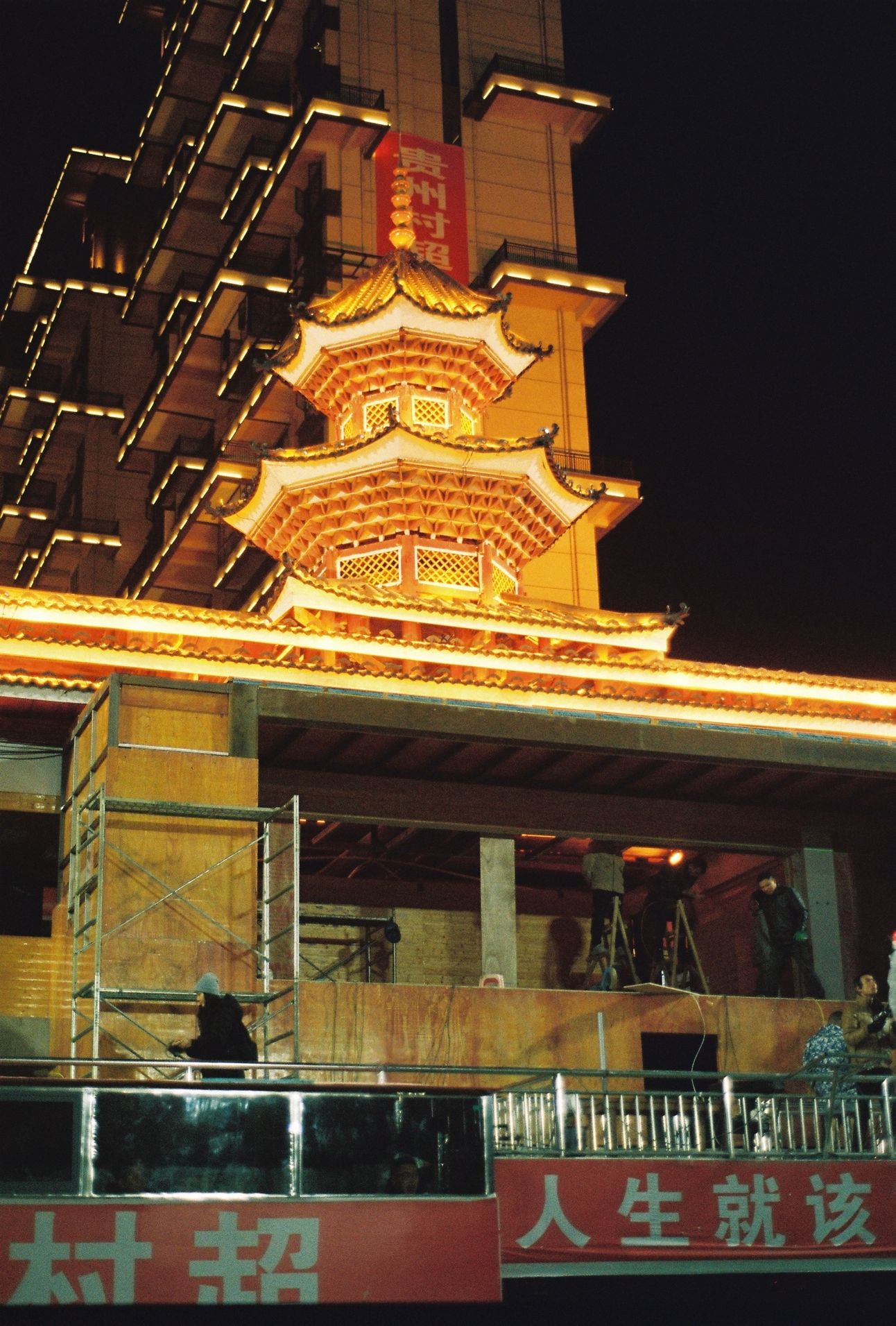
The grandstand at Cunchao Stadium lit up at night. Under construction for the Lunar New Year Gala.
Assembly
Oh assemblies, the point in your film where anything and everything is not only possible but is the correct idea. That is only a half joke; the more you edit, the harder it becomes to introduce a new visual theme or language into your film. There is no better time to try something than the assembly, it’s a blank canvas. With that in mind we cut an assembly without any interviews, not a single one. Deep down we knew we would add them in eventually but we had to do it for at least one cut. If we didn’t start without interviews it was only going to get more difficult to remove them.
Assemblies are the ultimate vibe cut of the film; maybe a small amount of structure sprinkled in with the randomness of cutting at 1 am. But seriously this is probably the ONE cut of the film that you can avoid thinking about structure if you want to. We just laid our film out chronologically and cut each scene as its own thing; no worries about transitions or how the flow was from scene to scene. You watch, listen, get a feel for the footage and let it rip. Writers run TV, directors are the are in charge of Hollywood but in Documentary? Editors hold the keys.
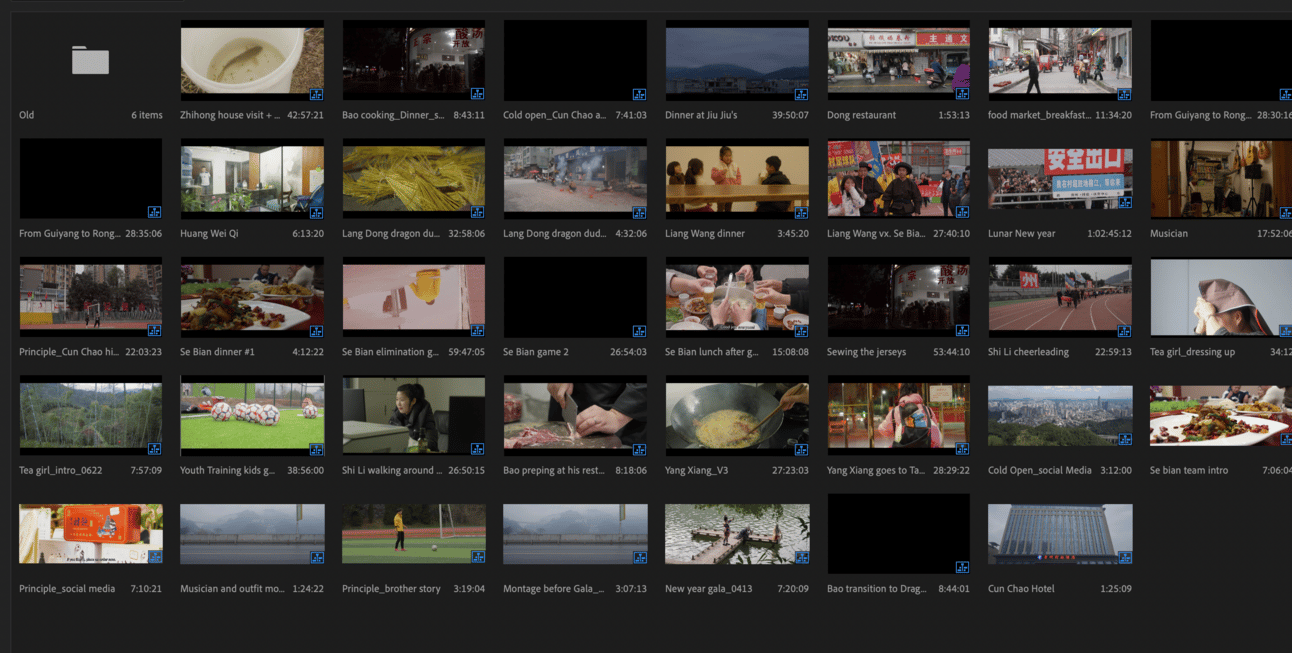
All the different scenes we have been working on for the film.
I can tell you the exact moment that editing clicked for me. “think of each cut as a stroke in a painting, never final and always building to something greater” This was liberating, I obviously knew you can re-do a cut or edit but when you apply the concept to brush strokes it just clicked. I was very hellbent early on with trying to get a scene damn near perfect before moving on. This made the brush stroke concept illuminating for me, thinking of it as a painting. The assembly is the first coat of paint, a lot will still be visible in the final painting, you just aren’t sure which parts yet.
Ours came out to 88 minutes, longer than I expected. While it’s nice to assume that means we had a lot of usable footage it is just a starting point. It’s easy to get caught up in length, feature films are sexy, a lot of times the first thing someone asks is how long is it? Which has been a tough question to answer. 10 minutes is often called the perfect festival length and after that it jumps to “feature length”. Everything in between is kind of a weird space and we’re in that weird space with our rough cut. But back to the 88 minute assembly, across 21 shoot days that’s a whopping 4 minutes per day! I always enjoy breaking it down, it’s a good reminder on how much we truly shoot for documentaries vs how much you actually use. We love to think of documentary as “truth" of reality but when you look at how much cherry picking of moments happen plus the re-ordering of events it gets fuzzy.
Defining and figuring out this fuzziness is key to any documentary and particularly to verite and observational docs. What amount of re-ordering of events is okay? Do we need to tell everything? Who’s POV is the film ultimately from? For me these questions are what makes documentary the best. These themes are the fabric of life, we choose which memories and experiences define us as people, it’s the same process happening in documentaries.
This isn’t a matter of right vs wrong, it’s about figuring out the narrative voice of the film. There is the visual language and the narrative voice for every film; these two play off each other, weaving the thread of the film. Our film is fuzzy, it’s a wool sweater that feels bouncy when you brush up against it. We refer to our film’s approach as a love letter to a time and place. Because we are following a team in a tournament there is a goal and end point we are constantly moving towards; they qualify or they don’t, they win or they don’t. This allows us to go wide with our story, the backdrop of sport brings with it drama and tension that inherently moves the narrative forward for us.
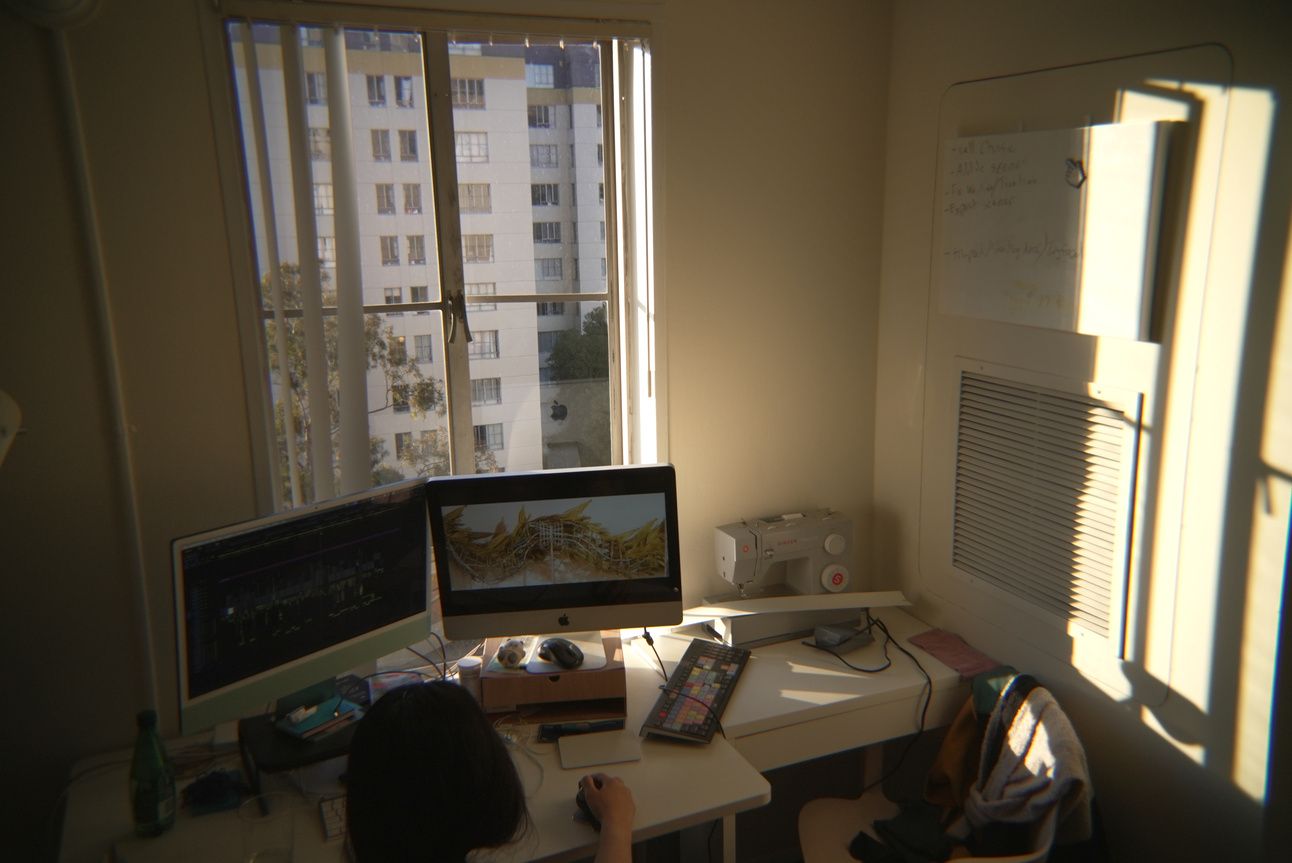
Sunday afternoon light in our office as we work on the latest cut.
Rough Cuts
So we had our assembly, we were figuring out our fuzz and began starting to really think about plot and order of events. Through the entire process we have focused on cutting one scene at a time, the index card method. We stuck to this through the rough cuts and then addressing transitions as needed while we changed the structure of the film. I believe this is the correct approach with verite, scene by scene cutting. Interview driven documentaries will go with the paper cut route from the beginning.
Every story needs a beginning, middle and end but why are documentaries beholden to the three act structure? Life doesn’t happen in three acts and doesn’t give two shits about spacing out the downbeats so why should we? We’ve been conditioned to expect it at this point and there are absolutely times and cases when a classic three act structure is the right choice. But it doesn’t need to be the start point for every documentary. The genre of documentary was born out of journalism but it’s sibling is poetry; formless and personal. This article from Brett Story does a much better job at exploring this concept and taking it a step further discussing ownership of story. I re-read this article regularly and it has become a bit of north star for me. Her films are exactly the type of documentary I love, poetic.
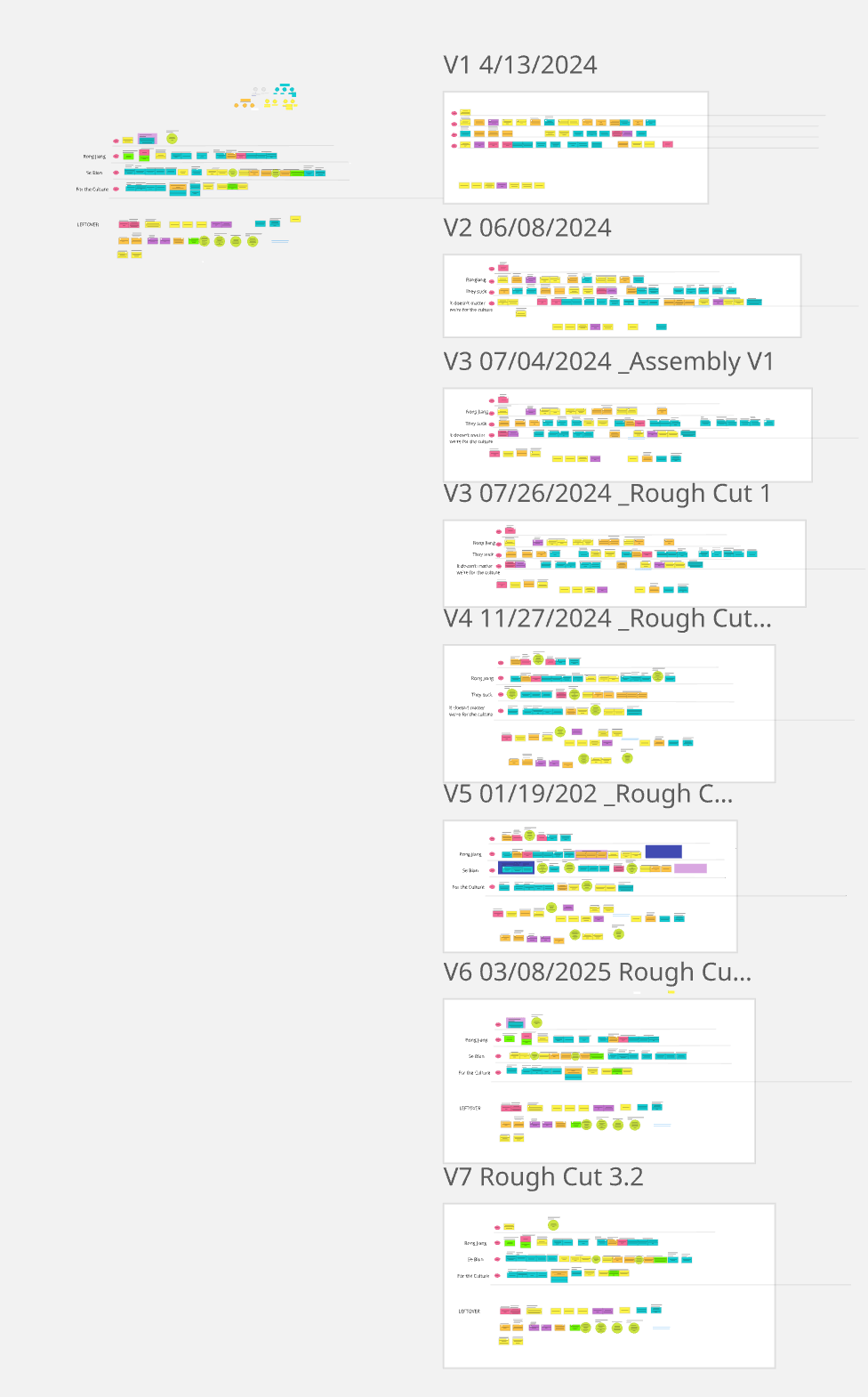
The different structures of our film using the index card method.
Our beginning, middle and end is built into our story; the team is playing games (three, conveniently) and based on the results they are either successful or not in their quest to qualify. We needed to find the balance of how much game to show and when. We want this film to have a sports backdrop, you learn and experience Chinese culture and daily life through the frame work of a soccer league. We have people and characters that aren’t related or connected to the team we follow. This gives us a lot of leeway and space to tell different stories but it also makes it extremely easy for the film lose focus and the scenes feel disconnected from each other. In a single word: random. We’ve had a few scenes that started in the end, then we tried the beginning and currently sit roughly in the middle but I’m not sure they will stay there. One of them is probably my favorite character and we just can’t seem to make her fit in perfectly yet! Meanwhile we’ve had others whose location hasn’t really have changed at all; it be like that sometimes! Other scenes have become a group with each other, we move one we move the others.
You hear the phrase about letting documentary footage speak to you, and show itself. I never doubted this but I hadn’t truly felt it before on my projects until Super Village. It’s not always a scene being good either. We had a scene I was convinced would be a lot longer than it is and much more important to the story than what is has become. It tied soccer with the themes of local business and social media. It also focused on a woman who wasn’t a player. It checked all of our boxes in terms of what we wanted and no matter how we cut it, it just fell flat. It was boring, it did feel authentic but it wasn’t working like other scenes. It took a few versions of the film but we finally shortened it and grouped it with a few others that thematically work together.
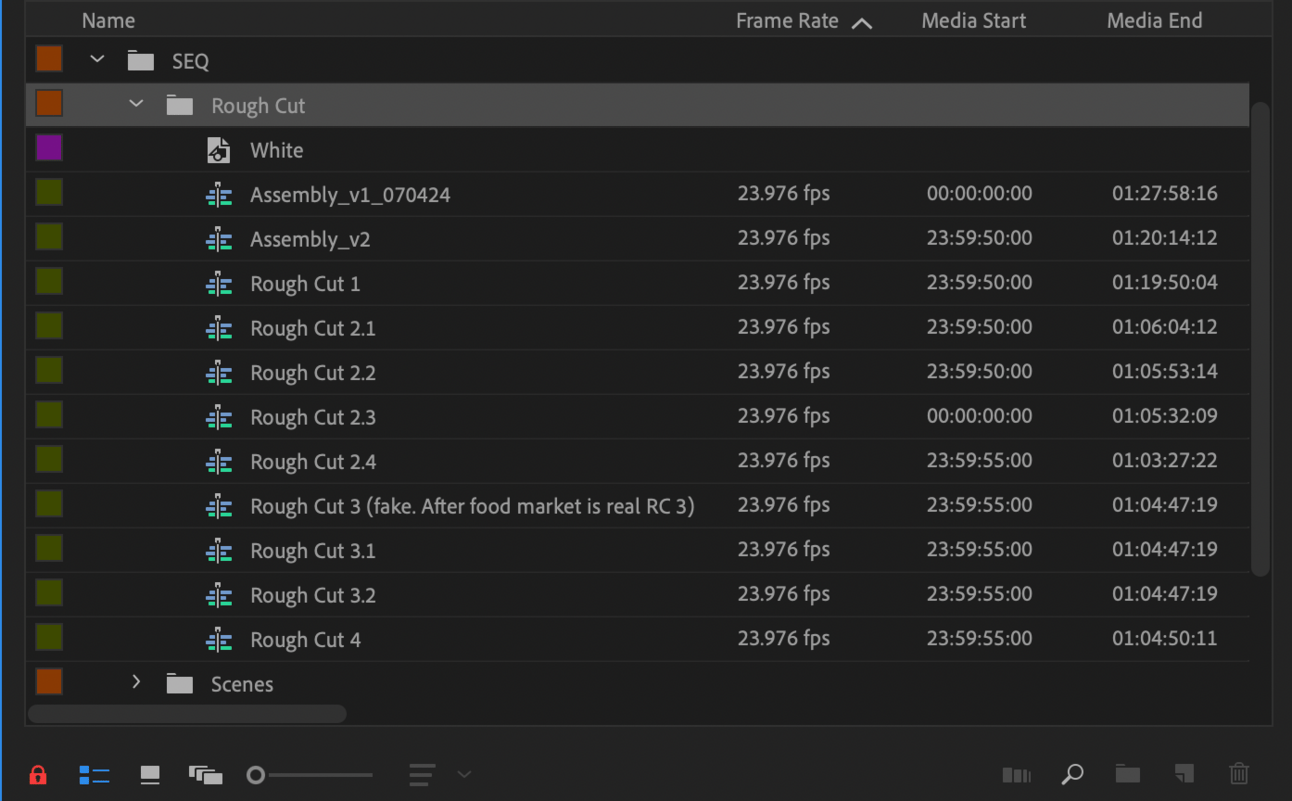
All the different cuts so far.
The Longest project either of us have made is a 21 minute film together, so this was a massive jump in length. Through our day jobs we’ve worked on feature length projects and even docu-series. So it’s not new to us but it’s always different when you’re in charge and when it’s your own money. Revising the rough cut has been truly fun and trying. It’s been a lot of late nights and early mornings, most of all though, it’s been a lot of wondering. It’s the most trial and error I have ever been a part of, but that’s letting the footage speak to you.
We’ll continue to let the footage speak to us, we’re on the 4th cut of the film and I know there will be at least a fifth. At the moment and it’s clocking in right around 55 minutes, an average length. In addition to the 30 minutes in cuts we’ve probably added another 15+ minutes of new footage in into the film. With each cut we have sent it to trusted peers and friends to collect notes; regroup, re-cut and do it all again. Lots of new brush strokes and even more covered brush strokes. Spurts of creativity and weeks of doubt will continue (until moral improves) and each time we’ll be that much closer to the final film.
Until next time, keep watching!
Reply